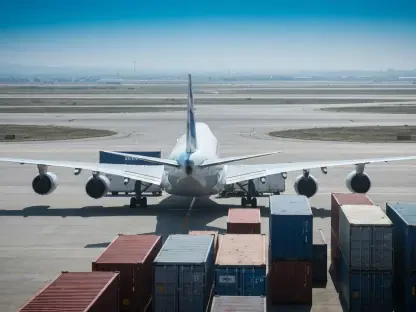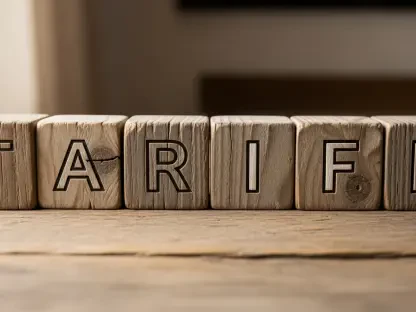Rohit Laila, an industry expert with extensive experience in logistics and a passion for integrating technology into the sector, shares his insights on a captivating criminal case involving Armenian crime organizations. With a deep understanding of supply chains and delivery mechanisms, Rohit provides a unique perspective on the alleged $83 million Amazon cargo theft, a series of events that unfolded against the backdrop of a violent power struggle between two prominent crime leaders.
Can you give us an overview of the Armenian crime organizations involved in this case?
These Armenian crime rings are part of what are known as “avtoritet,” a term from Russian culture indicating “authority” within criminal syndicates. Both organizations are based in Los Angeles County and have been engaged in a fierce power struggle, particularly over the control of criminal activities in the San Fernando Valley.
What charges have been brought against the 13 alleged members of these crime rings?
The charges include a range of serious offenses: attempted murder, kidnapping, illegal firearm possession, bank and wire fraud, and massive cargo theft. Altogether, these charges paint a picture of highly organized and violent criminal operations.
Who are Ara Artuni and Robert Amiryan, and what roles did they play in these crime organizations?
Ara Artuni and Robert Amiryan are alleged leaders of opposing Armenian organized crime syndicates in Los Angeles. Both are deeply involved in the rivalries within their world, with Artuni charged with attempted murder and Amiryan with kidnapping, indicating their high-level leadership roles and direct involvement in these violent feuds.
Can you detail the nature of the power struggle between Artuni and Amiryan?
Their power struggle is intensely violent, as evidenced by charges of attempted murder and kidnapping against them. The feud is rooted in control over the San Fernando Valley, with both figures vying for dominance in a manner reminiscent of long-standing rivalries in organized crime.
What specific incidents led to Artuni being charged with attempted murder?
Artuni allegedly ordered an attack to murder Amiryan during the summer of 2023, an act that escalated the ongoing conflict and led to the serious charge of attempted murder.
How did Amiryan reportedly retaliate against Artuni’s organization?
In response to the murder attempt, Amiryan allegedly orchestrated the kidnapping and torture of one of Artuni’s associates, showing the lengths these leaders would go to sustain their organizations’ power and intimidate rivals.
Can you explain the methods Artuni’s organization used to carry out the Amazon cargo thefts?
Artuni’s group reportedly infiltrated Amazon’s logistical network by posing as legitimate carriers. They contracted trucking routes, then diverged from these routes to steal significant portions of shipments, exploiting the trust in supply chain processes.
How much was allegedly stolen from Amazon, and how did the company estimate this amount?
It was estimated that over $83 million worth of goods were stolen. Amazon likely used internal tracking and financial audits to identify discrepancies in shipments and inventory that led them to arrive at this figure.
Can you describe the “credit card bust-out” scheme and how it was executed by Artuni’s organization?
The scheme involved charging credit cards for fake transactions at a fraudulent business. The funds would then be quickly withdrawn before the credit card companies could reclaim the money for disputed charges, showcasing a sophisticated understanding of financial systems.
What was the impact of this crime organization’s activities on public safety and commerce, according to Dwayne Angebrandts?
The acts were described as akin to those of an international cartel, significantly damaging public safety and legitimate commercial activities. They disrupted supply chains, which are crucial for maintaining the flow of goods in a stable economy.
How did federal authorities coordinate with local police departments in Los Angeles and Burbank during the operation?
Federal authorities worked alongside the Los Angeles and Burbank police in a coordinated operation that involved significant resources to execute arrests and seizures efficiently, underlining the complexity and seriousness of the case.
What were the outcomes of the operation on May 20, including any seizures made by federal agents?
The operation resulted in numerous arrests and the seizure of over $100,000 in cash, 14 firearms, and three armored vehicles, indicating the scale of the criminal activities and the resources the organizations controlled.
Can you discuss the potential legal consequences for the defendants if they are convicted?
If convicted, the spectrum of penalties is severe, ranging from 10 years to life imprisonment. This highlights the legal system’s view of their actions’ gravity and the strong repercussions of organized crime activities.
Are there any defendants still at large, and what steps are being taken to apprehend them?
Yes, authorities are still pursuing one defendant. Continued collaborative efforts between federal and local law enforcement are in place to ensure all involved parties are brought to justice.
What is your forecast for the future of organized crime in the logistics sector?
The logistics sector will likely see increasing efforts towards enhanced security measures to prevent such crimes. As these criminal methods become more sophisticated, so too must the technological and strategic measures to counter them, ensuring the integrity and efficiency of supply chains worldwide.









